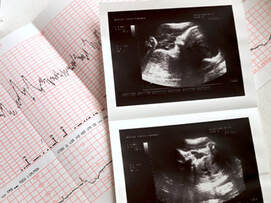Systemic Toxic Effects
Types of Systemic Toxic Effects
Toxic effects are generally categorized according to the site of the toxic effect. In some cases, the effect may occur at only one site. This site is termed the specific target organ.
In other cases, toxic effects may occur at multiple sites. This is known as systemic toxicity. Types of systemic toxicity include:
Types of Systemic Toxic Effects
Toxic effects are generally categorized according to the site of the toxic effect. In some cases, the effect may occur at only one site. This site is termed the specific target organ.
In other cases, toxic effects may occur at multiple sites. This is known as systemic toxicity. Types of systemic toxicity include:
- Acute Toxicity
- Subchronic Toxicity
- Chronic Toxicity
- Carcinogenicity
- Developmental Toxicity
- Genetic Toxicity (somatic cells)
|
Acute Toxicity
Acute toxicity occurs almost immediately (seconds/minutes/hours/days) after an exposure. An acute exposure is usually a single dose or a series of doses received within a 24-hour period. Death can be a major concern in cases of acute exposures. For example:
|
Figure 1. Faulty gas heaters can emit toxic carbon monoxide
(Image Source: iStock Photos, ©) |
Subchronic Toxicity
Subchronic toxicity results from repeated exposure for several weeks or months. This is a common human exposure pattern for some pharmaceuticals and environmental agents. For example:
- Ingestion of warfarin (Coumadin®) tablets (blood thinners) for several weeks as a treatment for venous thrombosis can cause internal bleeding.
- Workplace exposure to lead over a period of several weeks can result in anemia.
Figure 2. Warfarin Tablets (left); old lead pipes (right)
(Image Source: Adapted from iStock Photos, ©)
(Image Source: Adapted from iStock Photos, ©)
|
Chronic Toxicity
Chronic toxicity represents cumulative damage to specific organ systems and takes many months or years to become a recognizable clinical disease. Damage due to subclinical individual exposures may go unnoticed. With repeated exposures or long-term continual exposure, the damage from this type of exposure slowly builds up (cumulative damage) until the damage exceeds the threshold for chronic toxicity. Ultimately, the damage becomes so severe that the organ can no longer function normally and a variety of chronic toxic effects may result. Chronic toxic effects include:
|
Figure 3. Smoking cigarettes and/or drinking alcohol over a long period of time can lead to chronic toxicity
(Image Source: Adapted from iStock Photos, ©) |
Carcinogenicity
Carcinogenicity is a complex multistage process of abnormal cell growth and differentiation that can lead to cancer. The two stages of carcinogenicity are:
- Initiation — a normal cell undergoes irreversible changes.
- Promotion — initiated cells are stimulated to progress to cancer.
Chemicals can act as initiators or promoters.
The initial transformation that causes normal cells to undergo irreversible changes results from the mutation of the cellular genes that control normal cell functions. The mutation may lead to abnormal cell growth. It may involve a loss of suppresser genes that usually restrict abnormal cell growth. Many other factors are involved, such as growth factors, immune suppression, and hormones.
A tumor (neoplasm) is simply an uncontrolled growth of cells:
- Benign tumors grow at the site of origin; do not invade adjacent tissues or metastasize; and generally are treatable.
- Malignant tumors (cancer) invade adjacent tissues or migrate to distant sites (metastasis). They are more difficult to treat and often cause death.
|
Developmental Toxicity Developmental toxicity pertains to adverse toxic effects to the developing embryo or fetus. It can result from toxicant exposure to either parent before conception or to the mother and her developing embryo or fetus. The three basic types of developmental toxicity are:
|
Figure 4. Ultrasound images of a developing fetus
(Image Source: iStock Photos, ©) |
Genetic Toxicity
Genetic toxicity results from damage to DNA and altered genetic expression. This process is known as mutagenesis. The genetic change is referred to as a mutation and the agent causing the change is called a mutagen. There are three types of genetic changes:
- Gene mutation — change in DNA sequence within a gene.
- Chromosome aberration — changes in the chromosome structure.
- Aneuploidy or polyploidy — increase or decrease in number of chromosomes.
If the mutation occurs in a germ cell, the effect is heritable. This means there is no effect on the exposed person; rather, the effect is passed on to future generations.
If the mutation occurs in a somatic cell, it can cause altered cell growth (for example, cancer) or cell death (for example, teratogenesis) in the exposed person.
Figure 5. Genetic toxicity results from damage to DNA and altered genetic expression
(Image Source: iStock Photos, ©)
(Image Source: iStock Photos, ©)






